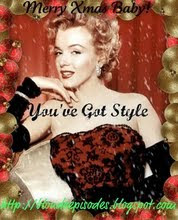Starting with the versatile chipboard 7" Tall Theatre Cabinet...
I realized that I was going to place this in a spot where it would be seen from all sides, so I started with the back.
I used several images from the Walter Crane Beauty and the Beast Collage Sheet to decorate the back of the assembled stage, painted with gold Lumiere paint, and trimmed out the images with Gold Zig Zag Dresden Borders. I reverse printed the facade that I planned on using on the front to adhere to the facade when I got to it.
For the front of the theatre I used the grand drape and the header from the Large Theatre Curtains, Columns and Box Seats Set Download, and accented it with Gilded Gold Stickles. The drape has been ornamented with Sweeper Fringe, 20mm Round Picture Frame Setting and Cabachon, Black and Gold Mini Cording, and closed up with the Oval Latch Set.
I used the fancy Arabian style columns also from Large Theatre Curtains, Columns and Box Seats Set Download on the sides of the theatre box.When the theatre opens, the doors contain box seats (from Large Theatre Curtains, Columns and Box Seats Set Download), the stage is framed with the Wide Aladdin Facade with Column chipboard set, the back of the stage has columns from the Large Theatre Curtains, Columns and Box Seats Set Download and Tall Ornate Gold Mirrors. The urns are from the Conservatory Garden Decor Set Collage Sheet and the railing in front of the box seats is a chipboard border.
Act I of "Beauty and the Beast" shows Belle and the Beast from the Walter Crane Beauty and the Beast Collage Sheet.
This close up of the scene shows the Silver Tea Service, miniature Dessert, Carved Armchairs with Red Velvet, Chippendale coffee table, and gold wire mesh chaise lounge from my stash of miniature treasures just waiting for a Beauty and a Beast to sit upon it!
Act II of "Beauty and the Beast" takes place in the conservatory. It is created with the Taj Mahl Folding Card covered with a pattern from the Graphic 45 Midnight Masquerade paper pad (which is also where the background wall paper and the paper on the floor of the stage is found).
This close up shows Belle finding the Beast dying when she returns to the palace from another image on the Walter Crane Beauty and the Beast Collage Sheet. The statue is another image from the Conservatory Garden Decor Set Collage Sheet.
This photo shows the columns from the Large Theatre Curtains, Columns and Box Seats Set Download that I used in the corners of the stage, as well as the Midnight Masquerade papers on the background and the floor of the stage.You can tell I used a lot of images from the Large Theatre Curtains, Columns and Box Seats Set Download. Just so you know, this is an amazing 'deal' that Alpha Stamps has for those who enjoy making miniature theatres and scenes. It includes:
* 5 large curtains (and other pieces), sized for the 7" Tall Theatre Cabinets. Curtains are 8 1/2" wide.
They can also be used on other large shadowboxes, or downsized as you wish.
* 3 sets of box seats, to use in the 2 narrow shadowboxes that are 'doors' for the cabinet
* 5 sets of columns, sized for the deep edges of the cabinets (the sides are either 1 1/2" or 2 1/2" deep).
* 1 Scalloped facade, sized for the center of the cabinet
A total of 20 files in one download!
I hope you enjoyed our little visit to see "Beauty and the Beast" via Alpha Stamps. If you would like to create a version of your own to enjoy, here is a list of the supplies that I used. Of course, Alpha Stamps has a HUGE collection of fairy tale collage sheets, so perhaps you would rather make a Snow White or Cinderella or Red Riding Hood mini theatre!?
Now, go make something beautiful!
´¨)
¸.•´¸.•*´¨) ¸.•*´¨)
(¸.•´ (¸.•´? Tristan
¸.•´¸.•*´¨) ¸.•*´¨)
(¸.•´ (¸.•´? Tristan





































































































































